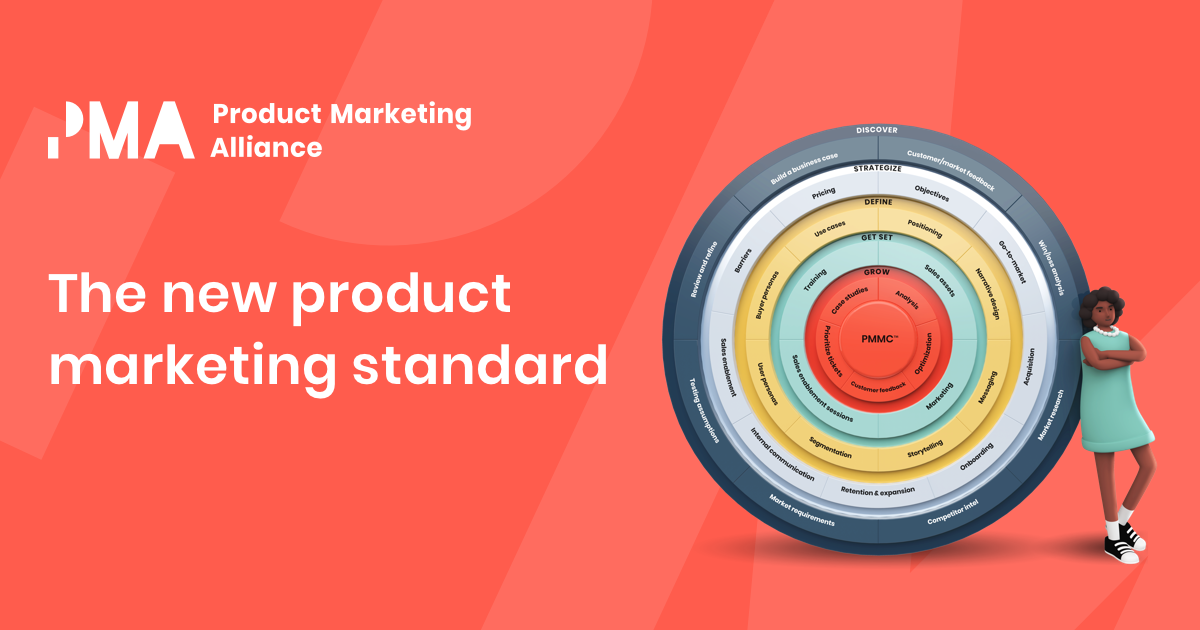We all know the power of words, right? They have the potential to captivate, persuade, and ultimately drive action. Having spent over a decade in product marketing, I've had my fair share of experiences with the challenge of turning features into benefits and creating value propositions that resonate.
But crafting a compelling value proposition is core to being a successful product marketer – you need to capture customers’ attention and drive conversions.
A well-crafted value proposition effectively communicates the unique value and benefits of your product or service, setting the stage for successful marketing and sales efforts. And let’s face it, sales is ultimately your biggest (internal) customer. Better messaging = better sales!
This blog post delves into the art of creating value propositions that resonate with your target audience, focusing on key elements such as emotional appeal, benefits over features, action-oriented language, simplicity, and the importance of testing and iteration. By following these guidelines, you can craft a value proposition that converts and propels you and your business to new heights!
Keep it clear and simple
Have you ever come across a product description that left you scratching your head, wondering what on earth they were trying to say? We've all been there, and it's not a pleasant experience. Your value proposition should be crystal clear and easily digestible.
For example, Dropbox keeps it simple with "Your files, anywhere." This clear and straightforward value proposition eliminates confusion. Users instantly understand that they can access their files any time, any place – a powerful message communicated with simplicity.
Another example is Slack. Slack's value proposition is peppered with relatable language. "Where work happens" speaks directly to the daily challenges and interactions of professionals. By using language familiar to their audience, Slack creates a personal connection that goes beyond the features of their collaboration tool.
Here are some additional tips to keep your message simple and clear:
- Keep your value proposition short and to the point. People have short attention spans, so you need to grab their attention quickly and make your point clearly. Aim for a value proposition that’s no more than two to three sentences long.
- Example: Zoom, "One platform to connect."
- Avoid using jargon and technical terms that your audience may not be familiar with. Use plain language that everyone can understand. If you must use jargon, define it clearly so that everyone is on the same page.
- Example: Grammarly, “Great Writing, Simplified”
- Use the active voice instead of the passive voice. The active voice is more concise and easier to read. For example, instead of "The product was developed by our team," write "Our team developed the product."
- Example: BetterHelp, "You deserve to be happy.”
- Proofread your value proposition carefully before you finalize it. Make sure there are no typos or grammatical errors. A poorly written value proposition will reflect poorly on your business.
To recap, it’s vital to avoid jargon and complex language. Instead, opt for simplicity that resonates with your audience. Break down your unique selling points into easy-to-understand statements. Remember, confused minds don't convert. Make it easy for your customers to see the value you bring to the table.

Appeal to your audience’s emotions
Now, let's talk about the emotional connection. As a product marketer, you likely already deeply understand that people don't buy products; they buy solutions to their problems and experiences. Your value proposition should evoke emotion and make your audience feel something.
One of my (admittedly biased) favorite examples of this is our recent message at MetaRouter: “Find Your MarTech Zen.” The goal was to evoke the sense of peace that comes from finding the exact tool you need to achieve your goals in a world of chaotic marketing technology solutions and ever-changing consumer needs
As a further example, consider Airbnb's value proposition – "Belong Anywhere." It goes beyond the transactional nature of renting a room and speaks to the universal desire for connection and belonging.
Think about the emotions your product can tap into – whether it's joy, relief, or empowerment – and infuse those into your value proposition. Emotions are the driving force behind human decisions, and by tapping into the fears, desires, and aspirations of your target audience, you can create a powerful connection that compels them to take action.
Here are three quick tips to make this tactic even more impactful:
- Use language that evokes emotions and creates a sense of urgency. Words have the power to inspire, motivate, and persuade, so choose them wisely. Use language that paints a vivid picture, igniting the imagination and stirring the emotions of your audience. Create a sense of urgency by emphasizing the limited availability or time-sensitive nature of your offer, instilling a fear of missing out and prompting immediate action.
- Personalization is key in appealing to your audience's emotions. Speak directly to your audience, addressing their specific pain points and demonstrating a genuine understanding of their challenges. This tailored approach fosters a sense of connection and trust, making your value proposition more relatable and compelling.
- Examples: Spotify and Netflix
- Spotify: "Your music, your way. Discover playlists tailored just for you."
- Netflix: "Shows for you. We know what you'll love."
- Examples: Spotify and Netflix
- Storytelling is a powerful tool that can engage your audience on a deeper level, evoking emotions and creating a lasting impact. Share stories of customers who have successfully overcome their challenges using your product or service. These real-life narratives resonate with your audience, building credibility and demonstrating the tangible benefits of your offering.
- Example: Volkswagons’ “Moments” ad, which connects their new safety features to the impact they can have on a family (don’t worry, it has a happy ending!).
By appealing to your audience's emotions, using evocative language, personalizing your message, and employing storytelling, you can craft a value proposition that strikes a chord with your target audience, driving conversions and propelling your business to new heights of success.
Emphasize benefits over features
While features are essential, it's the benefits that truly resonate with customers. Don't just list what your product can do; emphasize how it improves the lives of your customers. Shift the focus from the "what" to the "why." And don’t be afraid to lean into your uniqueness!
For example, instead of saying your camera has a 20-megapixel sensor, highlight that it captures moments with stunning clarity, preserving memories in vivid detail. Paint a picture of the positive outcomes your customers can expect from using your product. This is how GoPro got me!
Amazon also does a great job of this – Amazon Prime doesn't just offer fast shipping; it promises "Fast, free delivery on millions of items." The emphasis here is on the benefit – the freedom to shop without worrying about additional shipping costs. It's a powerful incentive that goes beyond the logistical features of delivery speed.
To emphasize benefits over features, follow these tips:
- Focus on the customer: What are their pain points? What are their goals? How can your product or service help them achieve those goals? When you understand your customers' needs, you can tailor your value proposition to them and make it more relevant.
- Quantify the benefits whenever possible: Numbers can help you make your value proposition more concrete and believable. For example, instead of saying your product "improves efficiency," you could say it "saves customers an average of 20 hours per week."
- Use customer testimonials and case studies: These can help you build credibility and show potential customers how your product or service has helped others.
- Highlight the unique selling points of your product or service: What sets you apart from your competitors? Make sure to mention these unique selling points in your value proposition. And my suggestion – be BOLD and clear about it!
The TL;DR here is that you should focus on how your product or service solves your customers' problems and improves their lives. When you do this, you'll be more likely to capture their attention and make them want to learn more.
Use action-oriented language
Action-oriented language is essential for creating a compelling value proposition that drives conversions. By using strong, vivid verbs, you can create a sense of urgency and excitement that motivates readers to take action.
Avoid the passive voice and use the present tense to make your value proposition sound more immediate and relevant. Incorporate persuasive language that highlights the benefits of your product or service, and use language that is tailored to your target audience.
Here are some examples of how to use action-oriented language in your value proposition:
- Instead of: "Our product can help you save money."
- Try: "Save money today with our revolutionary product!"
- Instead of: "Our service provides excellent customer support."
- Try: "Experience unparalleled customer support with our dedicated team."
- Instead of: "Our software offers advanced features."
- Try: "Unlock new possibilities with our cutting-edge software."
While these examples are quite generic, you get the idea! By using action-oriented language, you can create a value proposition that resonates with your audience and compels them to take action.
Test and iterate
To ensure that your value proposition is effectively converting customers, it's crucial to continuously test and iterate based on data and feedback. A/B testing allows you to compare different versions of your value proposition and determine which one resonates better with your audience. Test various elements such as headlines, body copy, call-to-actions, and imagery to identify the most compelling combination.
Google is the king of A/B testing. From the color of a button to the wording of a call-to-action, Google constantly experiments. Google's search engine home page has gone through numerous iterations based on user feedback and testing, showcasing the importance of continuous refinement.
Tracking key metrics is essential for measuring the success of your value proposition. Monitor conversion rates, click-through rates, bounce rates, and other relevant metrics to gain insights into how your audience interacts with your message. Analyze these metrics regularly to identify trends and areas for improvement.
Feedback from customers and prospects provides valuable insights into the effectiveness of your value proposition. Conduct surveys, interviews, or focus groups to gather their opinions, preferences, and suggestions. This feedback can help you refine your value proposition to better align with your target audience's needs and expectations.
Heatmaps and scroll maps can provide visual representations of how users interact with your value proposition. Heatmaps show areas of high and low engagement, while scroll maps indicate how far users scroll down your page. These tools can help you identify which elements of your value proposition are capturing attention and which ones need improvement.
By continuously testing and iterating your value proposition, you can optimize it to maximize conversions and achieve your business goals. Regularly review your data, gather feedback, and make data-driven adjustments to ensure that your value proposition remains effective in attracting and retaining customers.
Words that sell, relationships that last
Words have the power to create connections, evoke emotions, and drive action. Crafting value propositions that sell is not just a skill; it's an art. It's about understanding your audience, speaking their language, and offering solutions that genuinely enhance their lives.
So, as you embark on the journey of refining your value propositions, remember to keep it personal, relatable, and constantly evolving. Because in the end, it's not just about selling a product; it's about building relationships that last.
Happy crafting, fellow product marketers!


















 Follow us on LinkedIn
Follow us on LinkedIn





.svg)
Start the conversation
Become a member of Product Marketing Alliance to start commenting.
Sign up now